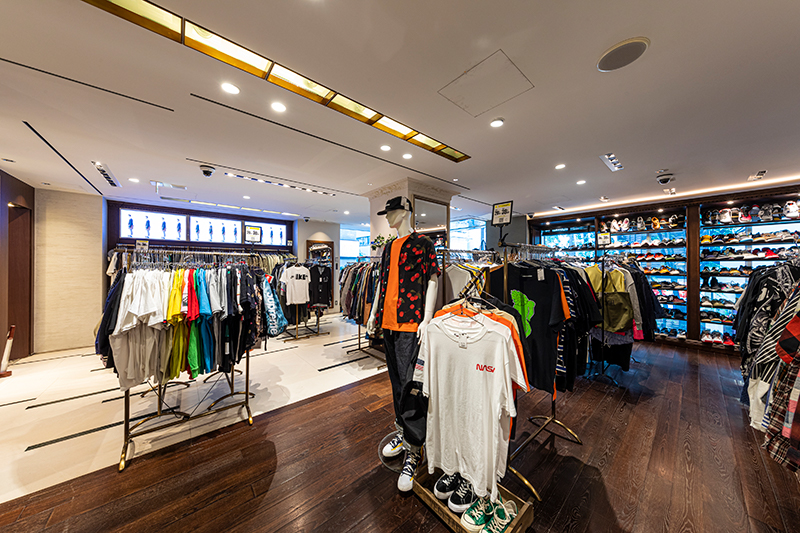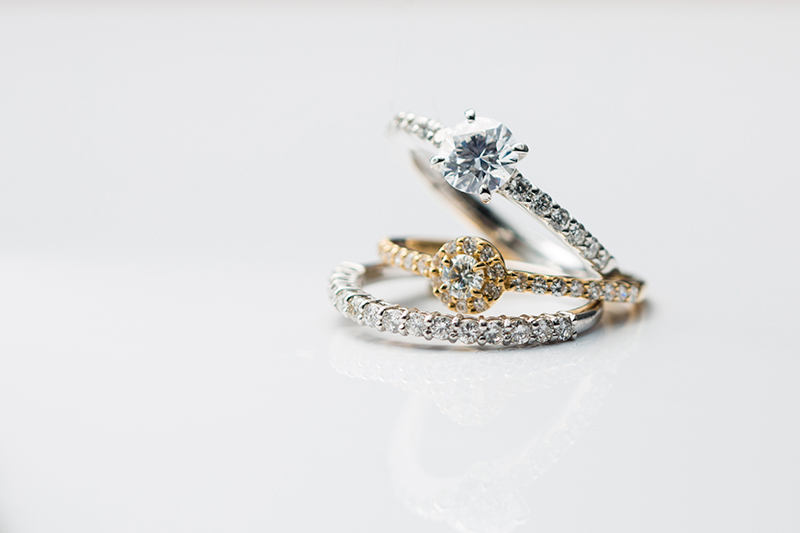INTERVIEW WITH KOMEHYO
The Reuse market in Japan is expected to grow to 3 trillion yen by 2025. With Covid-19 as a tailwind, e-commerce sales and purchases like "nested life buying" and "take a breather selling" are on the rise, and the base of users continues to expand. How will the strengthening presence of secondary distribution affect the state of primary distribution?
The Reuse market in Japan is expected to grow to 3 trillion yen by 2025. With Covid-19 as a tailwind, e-commerce sales and purchases like "nested life buying" and "take a breather selling" are on the rise, and the base of users continues to expand. How will the strengthening presence of secondary distribution affect the state of primary distribution?
Ever since 1947, when secondhand clothing store "KOMEHYO Shoten" opened in Naka-ku of Nagoya, KOMEHYO Holdings has been committed to the idea of sustainability as its corporate motto for over 70 years since opening. Soon after the war, the company obtained funds for its business by peddling clothes when the society was poor. Today, KOMEHYO Holdings not only has one of the largest number of products in Japan, but also continues to revolutionize the Reuse industry by developing technology that combines reuse and technology, such as operating a flea market app and AI appraisal. In this interview, I spoke with Mr. Abiru from the Merchandise Department's Fashion group, about KOMEHYO SHINJUKU which continues to take new initiatives, especially in the field of fashion.

Recently, there has been a rapid increase of stores selling fashion archives. Please tell us what is considered most important when preparing for a KOMEHYO pop-up shop?
Quality is definitely important, but quantity is also key. When the quality and quantity we are satisfied with is gathered, then we open a pop-up shop. When it comes to “HERMES MARGIELA POPUP STORE”, they open a shop after gathering over 400 items, and “CÉLINE ARCHIVE PHOEBE PHILO” picks up over 300 items. Another important thing is pricing the items to maintain a fair market price.


Is there anything you are conscious of when buying?
I’m always on the lookout for clothes with good quality designs that are made based on craftsmanship, such as HERMES or CHANEL. I also keep an eye out for items that are difficult to make due to current trends. For example, a patterned silk shirt, mink/fur coat, or items that are expected to decrease in the future. It’s necessary to think about how we can convey these items, along with the history and background of it.

The standard value of secondary distribution is starting to affect the ways of primary distribution. Due to these trends, the primary distributors are also beginning to handle used clothing, and movements that transcend barriers are increasing. Under these circumstances, what do you consider the unique characteristics and strengths of secondary distribution?
Secondary distribution still has that old-fashion image of pawnshops and recycle shops, so we need to improve the branding of the market itself, especially in the areas that the primary distribution cannot express. For example, in our industry we are able to express combinations that can’t be handled in primary distribution due to the clashing of brands. We also need to approach new technologies and create original plans.

You have actually developed new technologies.
This connects to our concept called “reuse tech”. We are always searching for new forms of reuse and technology. By utilizing the new technologies, we aim to create a healthy Reuse market and hope to realize a sustainable society.
The development of “AI Shingan (authenticity)” was particularly surprising.
KOMEHYO had all the necessary requirements for an AI development. The 1.6 million items carried annually became a huge amount of data that improved the accuracy of the AI, and the AI level is constantly improving through the skills of the authenticators that we cultivated. By handing over the knowledge of the authenticator to the AI, we hope to leave behind the ability to authenticate as an asset for the industry.

KOMEHYO’s ability to authenticate was also utilized in the flea market app “KANTE”. The knowledge to view the C2C aspect was also included. What was the intention behind this?
In a regular C2C situation, there are possibilities of counterfeits entering the market which will easily lead to problems. With our service, if a buyer wishes, a skilled authenticator will properly authenticate each and every item before delivering it to the buyer in order to avoid any troubles. After sales service is important, but before sales service is just as important.
You’re taking a different approach to sustainability. For example, KOMEHYO AOYAMA uses reused building materials in the store design.
At KOMEHYO AOYAMA, 98% of the interior, excluding the skeleton frame, is made of reused or environmentally friendly building materials. Also, other than the products on display, we don’t keep inventory in the store. It’s a system that allows customers to order the product from KOMEHYO online and see the actual product before purchasing it. We are aiming to create a new style of sales by combining our large quantity of items available online with customer service at the stores.
KOMEHYO SHINJUKU also has its own unique project. The most recent was the “old shoes restore project” which was an attempt to bring back life into vintage shoes.
The word “restore” means to “bring back to the original state”. We purchase shoes even with bad conditions, which in the past we wouldn’t have purchased, and by restoring it, we can reduce the number of trashed shoes. Rather than just passing the products on from right to left, we replace the full sole or take care of the leather and make sure each pair of shoes is in the best condition, in order to provide a new sense of value.

Another project from KOMEHYO SHINJUKU was the creation of masks with fashion brands.
I always questioned how to utilize used clothes or items that became harder to sell in the stores. So, we decided to create masks with COTEMER, who shares the same passion for sustainability and agreed that this timing of Covid-19 was good. The masks were recreated from denim, flannel shirts, military items to KOMEHYO’s dead stock suits. KOMEHYO SHINJUKU is one of the company’s stores that specializes in fashion. Both stores have an event space on the first floor, where pop-ups are held every now and then.
As for jewelry, you have an original brand.
The designs are original but rather than collecting and manufacturing materials from scratch, the jewelry is remade by reusing materials from purchased jewelry. No longer wanted jewelry with an old design but good quality is transformed into an attractive new item. The ring parts and shaping of the stones are all hand done by craftsmen. It’s such a waste to let jewelry sit at home just because they don’t fit current trends. So, I believe that it’s our mission to bring them back into the cycle.


KOMEHYO is developing its own unique business, from technology development, operations, approach to sustainability, collaborations with the primary distribution, etc. What is a common concept with all these projects?
It’s our responsibility to connect the customer’s unwanted items to those who want it. We believe that a product’s mission is complete when it is passed on and continued to be used. This is the “relay use” concept that has been important to KOMEHYO since establishment. I know that if we spread this cycle to become a standard level, the values of the Reuse market will change as a whole. To do so, we need to find new technology and values. And I would like to expand these ideas we have cultivated not only in Japan but globally also.
Interview text_SHINGO ISOYAMA

